Experience Authentic Chinese Village Life at Dangjia Village Scenic Area
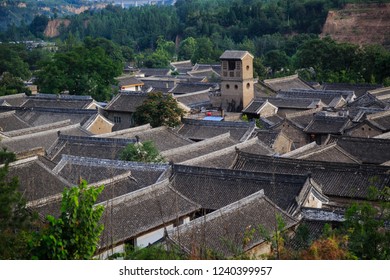
An Essential Guide to Visiting Dangjia Village Scenic Area
In This Guide
- An Essential Guide to Visiting Dangjia Village Scenic Area
- The Rich History and Legends of Dangjia Village Scenic Area
- Main Highlights: What You Absolutely Can’t Miss
- Planning Your Visit: A Practical Guide
- Tickets: Prices, Booking, and Tips
- How to Get There: A Complete Transportation Guide
- Local Cuisine and Accommodation Nearby
- Frequently Asked Questions
- Final Thoughts on Your Trip
Nestled in the picturesque loess valley of Shaanxi province, Dangjia Village stands as a living testament to China’s rich historical tapestry. This impeccably preserved 14th-century village offers international travelers a unique glimpse into the past, showcasing the architectural prowess and cultural heritage of ancient Chinese society. Once the thriving home of the Dang clan—merchants who deftly maneuvered timber and goods across the Yellow River—the village now serves as a serene escape from the frenetic pace of modern life.
As you wander through the cobblestone streets lined with grey-brick courtyard houses, each bearing intricate carvings and diverse architectural styles, you’ll find yourself transported back in time. The enchanting atmosphere is further enhanced by the communal spirit of the village, where about 320 families still reside, preserving age-old traditions amidst the echoes of history.
What to Expect
Visitors to Dangjia Village can anticipate a rich blend of historical exploration and cultural immersion. Here are some highlights:
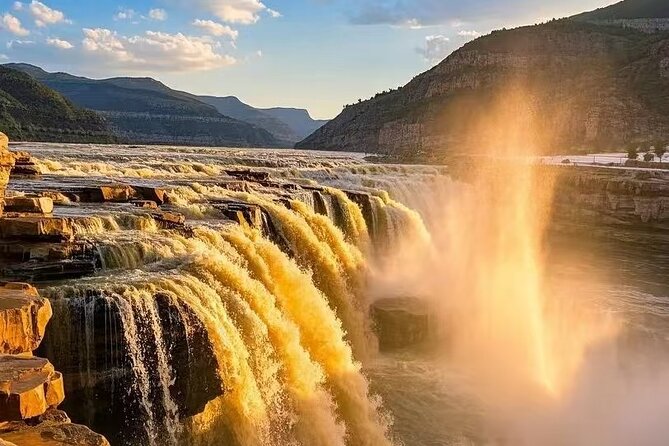
Dangjia_Village_Scenic_Area.
- Architectural Marvels: Marvel at the elegant six-storey Confucian pagoda and the well-preserved courtyard houses, which collectively reflect the harmonious design principles of ancient Chinese architecture.
- Cultural Activities: Engage with local artisans and discover traditional crafts that have stood the test of time. Don’t miss the opportunity to sample the village’s famous numbing spicy peppercorns, a culinary delight that adds a unique flavor to Chinese cuisine.
- Breathtaking Views: Before entering the village, take a moment at the viewpoint to admire the thatched roofs and the stunning landscape that cradles this historical gem.
Practical Tips
- Getting There: The village is easily accessible from Hancheng, and visitors can opt for a shuttle service for a nominal fee if they prefer to avoid the steep walk downhill.
- Best Time to Visit: While the village is open year-round, visiting during the spring or autumn allows you to enjoy the mild weather and vibrant scenery.
- Visitor Amenities: Facilities such as clean restrooms and small shops selling local produce enhance the overall experience, making it both comfortable and enjoyable.
For history enthusiasts and cultural explorers alike, a visit to Dangjia Village is not just a journey into the past; it’s an opportunity to connect with the heart of Chinese heritage. Prepare to be enchanted by this timeless enclave where every stone tells a story.
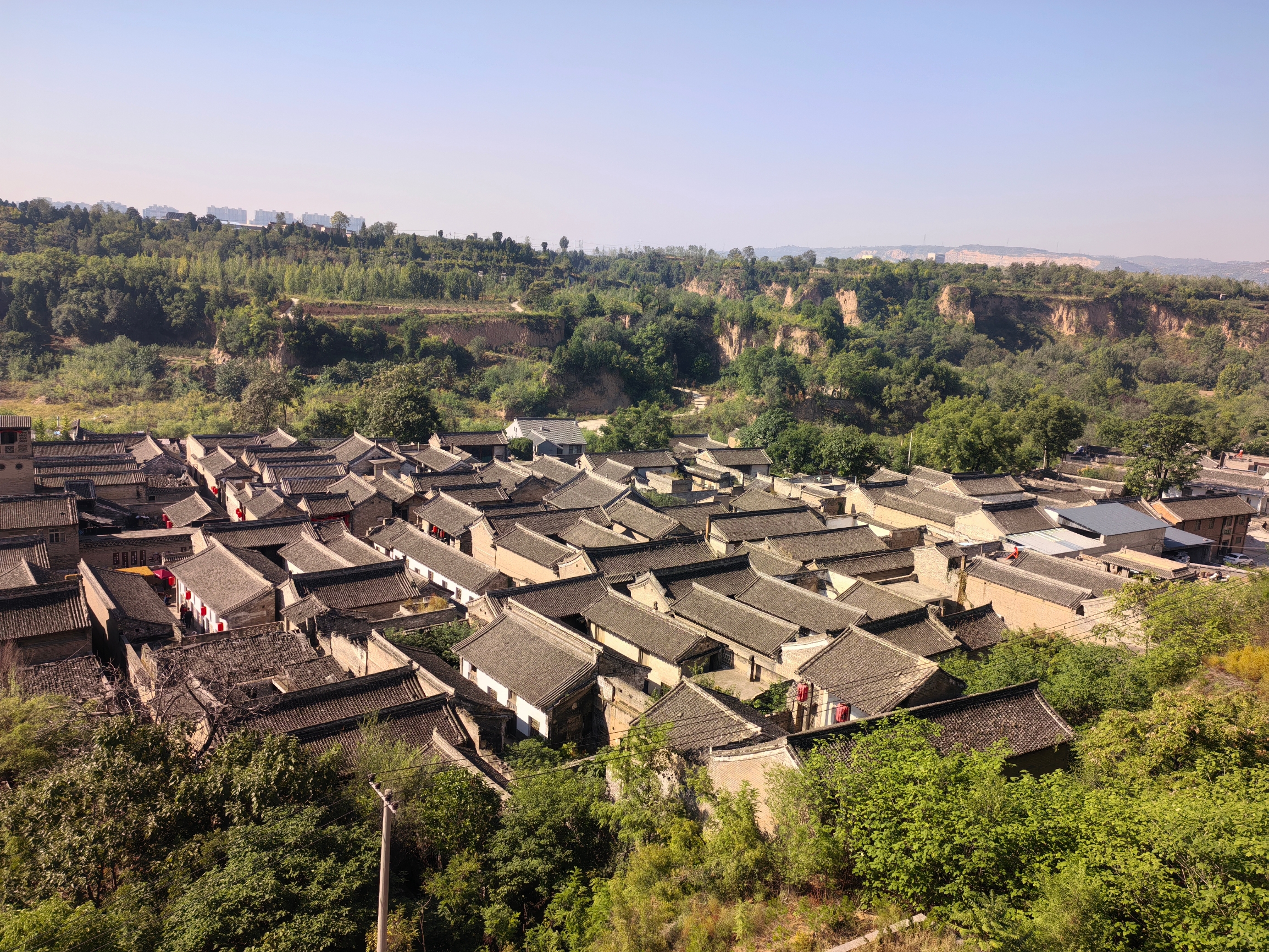
Dangjia_Village_Scenic_Area.
The Rich History and Legends of Dangjia Village Scenic Area
A Journey Through Time: The Historical Significance of Dangjia Village
Nestled in the loess valleys of Shaanxi Province, Dangjia Village is a captivating reminder of China’s rich history and cultural heritage. Dating back to the 14th century, this well-preserved village offers visitors a unique glimpse into the lives of its early inhabitants, showcasing a blend of architectural styles and agricultural practices that have endured for centuries.
Historical Background
Originally inhabited by the Dang and Jia clans, this village served as a thriving center for commerce and agriculture. The Dang clan, known for their expertise in timber transport across the Yellow River, contributed significantly to the local economy. Over time, the village evolved into a quintessential farming community, where the residents cultivated crops and raised livestock, creating a sustainable lifestyle that resonated with the rhythms of nature.
The village comprises approximately 125 grey-brick courtyard houses, notable for their intricate carvings and distinctive architectural features. The six-storey Confucian pagoda, a symbol of the village’s scholarly heritage, stands proudly at one corner, beckoning visitors to explore its historical significance.
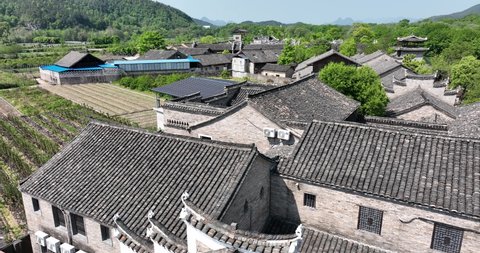
Dangjia_Village_Scenic_Area.
Legends and Folklore
Like many ancient villages in China, Dangjia is steeped in legends that enrich its historical narrative. Among the most cherished tales is that of a benevolent spirit believed to protect the villagers. According to local lore, this spirit, known as the Guardian of the Loess, ensures bountiful harvests and shields the community from natural disasters. Villagers honor this spirit through seasonal festivals, expressing gratitude for the blessings received throughout the year.
Another enchanting legend speaks of a hidden treasure buried beneath the village, said to be left behind by the founding clans. This treasure, rumored to include precious artifacts and ancient scrolls, has sparked countless quests and stories among locals and visitors alike, adding an element of mystery to the village’s charm.
Architectural Marvels
As you wander through the cobbled streets of Dangjia Village, the architecture tells stories of its own. The structured layout of the courtyard houses reflects the Confucian ideals of harmony and balance, while the carved wooden beams and stone pathways reveal the craftsmanship of the artisans of yore. Each doorway and window frame is adorned with intricate designs, often depicting elements of nature and folklore, emphasizing the villagers’ deep connection to their surroundings.
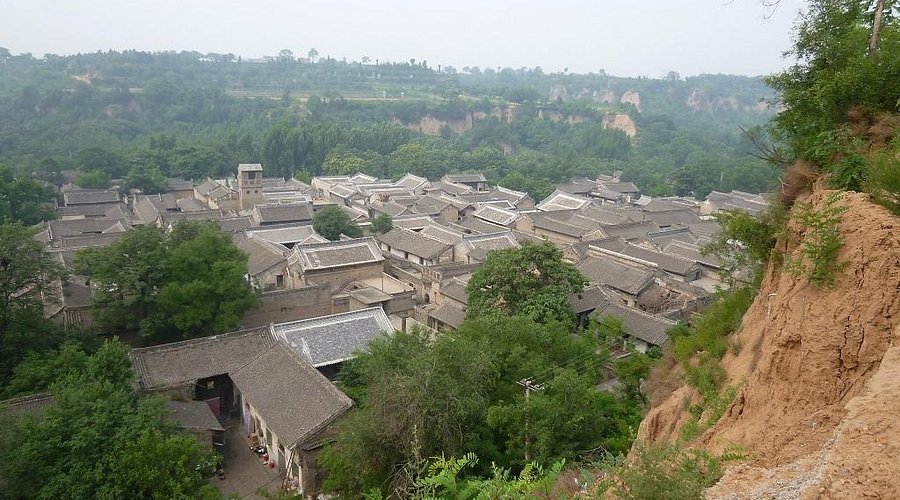
Dangjia_Village_Scenic_Area.
A Timeless Escape
Today, Dangjia Village stands as a living museum, offering an immersive experience that transports visitors back in time. Whether exploring its ancient buildings, savoring local delicacies like the famed numbing spicy peppercorns, or simply soaking in the tranquil ambiance, travelers are invited to appreciate the rich tapestry of history and legends that define this remarkable destination.
Visiting Dangjia Village is not merely a stroll through a historic site; it is an opportunity to connect with the past, understand the resilience of its people, and celebrate the enduring spirit of Chinese culture. This scenic area is a testament to the beauty of tradition, inviting all who enter to discover the stories that have shaped it over centuries.
Main Highlights: What You Absolutely Can’t Miss
Discovering the Timeless Charm of Dangjia Village
Nestled in the picturesque loess valley northeast of Hancheng, Dangjia Village is a beautifully preserved slice of history that transports visitors back to the 14th century. This remarkable village, once home to the prosperous Dang and Jia clans, showcases traditional Chinese architecture and offers a unique glimpse into rural life from centuries past. Here are the main highlights you absolutely cannot miss during your visit:
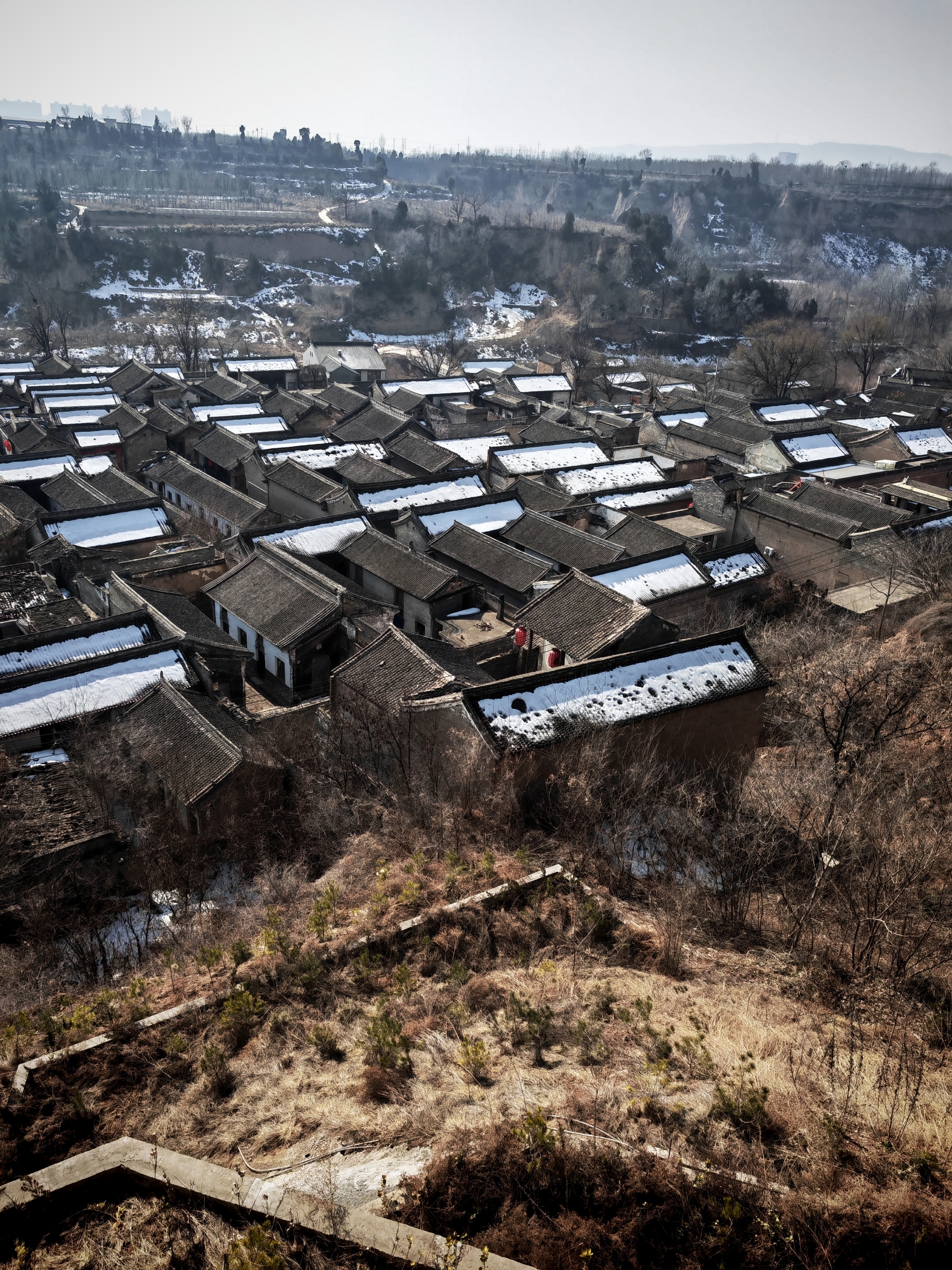
Dangjia_Village_Scenic_Area.
1. Architectural Marvels
Wander through the narrow, cobblestone streets lined with over 125 stunning grey-brick courtyard houses. These residences, notable for their intricate carvings and varied architectural styles, have stood the test of time. The Confucian pagoda, a six-story structure, stands proudly at the village’s edge, exuding an aura of tranquility and reverence.
2. The Quaint Atmosphere
As you stroll through the village, you’ll feel as if you’ve stepped into a time capsule. The serene ambiance, characterized by thatched roofs and rustic charm, invites you to lose yourself in the simplicity and beauty of ancient life. Be sure to pause at the viewpoint for a breathtaking panorama of the village, where the thatched roofs create a picturesque scene against the backdrop of nature.
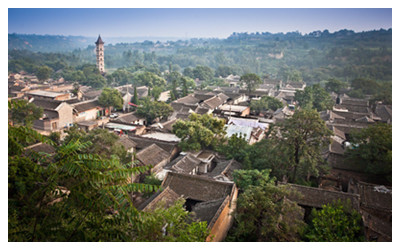
Dangjia_Village_Scenic_Area.
3. Cultural Insights
Engage with the local culture by visiting small shops that sell numbing spicy peppercorns, a specialty of the village. These shops, run by friendly locals, provide an opportunity to learn about the region’s agricultural practices and culinary traditions. Don’t miss the chance to taste some local snacks, which often feature these unique spices.
4. Historical Context
To fully appreciate the significance of Dangjia Village, take time to learn about its history as a hub for successful merchants who transported timber and goods across the Yellow River. This historical context enriches your understanding of the village’s architectural significance and its role in the broader tapestry of Chinese history.
5. Exploration Beyond the Village
While Dangjia Village is a highlight in its own right, the surrounding area is rich with attractions. Nearby sites like the Ruins Cultural Artifacts Exhibition Hall of East and West Zhou Dynasty and Fawang Temple offer additional insights into the region’s ancient history and religious practices. Make a day of it by exploring these nearby landmarks for a more comprehensive experience.
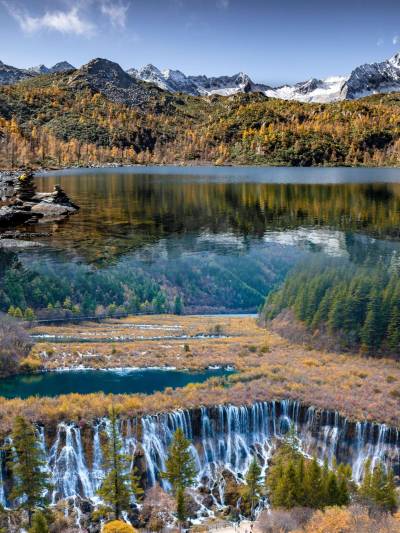
Dangjia_Village_Scenic_Area.
6. Practical Tips for Visitors
- Accessibility: Be prepared for some steep walks down to the village. If mobility is an issue, consider using the shuttle service available for a nominal fee.
- Best Time to Visit: Spring and autumn are ideal for pleasant weather, making your exploration comfortable and enjoyable.
- Visitor Amenities: Don’t worry about facilities; there are clean restrooms available throughout the village, ensuring a pleasant visit.
In summary, Dangjia Village is a treasure trove of history and culture that promises an enriching experience for anyone interested in the ancient ways of Chinese life. Whether you’re marveling at the architecture, mingling with locals, or simply soaking in the atmosphere, this village is sure to leave a lasting impression on your journey through China’s storied past.
Planning Your Visit: A Practical Guide
Essential Tips for Visiting Dangjia Village Scenic Area
Nestled in the loess valley northeast of Hancheng, Dangjia Village is a delightful glimpse into China’s rich historical tapestry, offering international travelers an opportunity to step back in time to the 14th century. Here’s a comprehensive guide to help you plan your visit to this charming and well-preserved village.
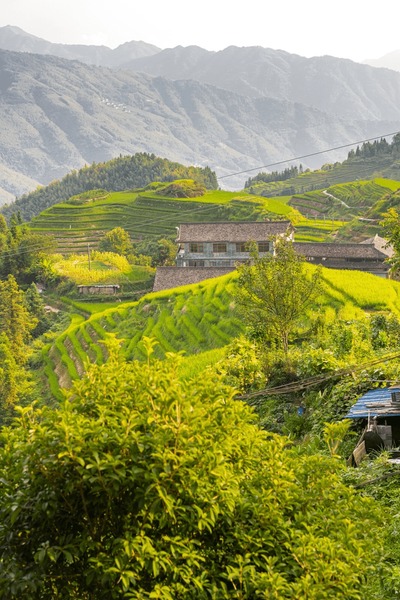
Dangjia_Village_Scenic_Area.
Getting There
- Location: Dangjia Village is located just northeast of Hancheng, Shaanxi Province. This picturesque site draws visitors due to its historical significance and stunning architecture.
- Transportation:
- By Train: The nearest major city is Xi’an, which is well-connected by train. After reaching Hancheng, local taxis or buses can take you to the village.
- By Car: Renting a car is a convenient option if you prefer a more flexible travel schedule. The roads are generally well-maintained.
- Shuttle Services: Once you arrive at the village, there are shuttle services available for a nominal fee if you prefer not to walk.
Best Time to Visit
- Optimal Season: Spring (April to June) and autumn (September to November) are ideal for visiting, as the weather is pleasantly mild and the surrounding landscapes are particularly beautiful.
- Crowds: Weekdays are generally less crowded than weekends, so plan your visit accordingly to enjoy a quieter experience.
Entrance Fees and Hours
- Admission: There is a small entrance fee to access Dangjia Village. Check local listings for the most current prices.
- Opening Hours: The village is open 24 hours, but the best time to explore is during daylight hours. Early mornings or late afternoons provide excellent lighting for photography and a serene atmosphere.
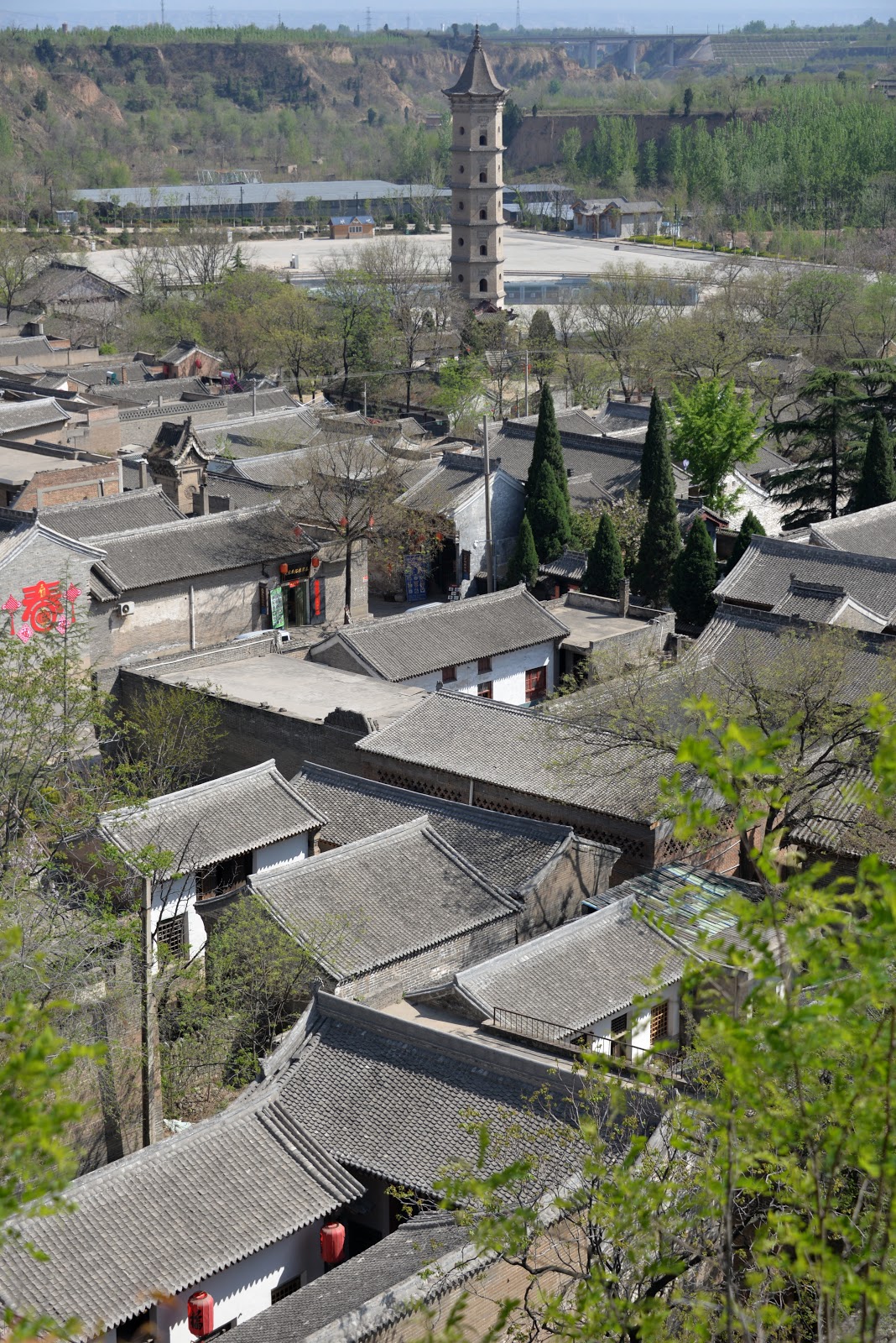
Dangjia_Village_Scenic_Area.
Exploring the Village
- Footpaths: The village features cobblestone paths, making it a charming yet somewhat challenging walk. Wear comfortable shoes, as the terrain can be uneven.
- Key Attractions:
- Confucian Pagoda: A striking six-story structure that showcases the architectural styles of the time.
- Traditional Courtyards: Wander through the beautifully preserved grey-brick courtyard houses, which offer insight into the living conditions of historical Chinese families.
- Local Shops: Don’t miss the opportunity to buy unique local goods, including the village’s famous numbing spicy peppercorns.
Amenities
- Restrooms: Clean public restrooms are available near the pagoda for visitor convenience.
- Dining Options: While dining options within the village may be limited, local eateries in Hancheng offer a variety of traditional Chinese dishes. Consider trying local specialties to enhance your cultural experience.
Nearby Attractions
While in the area, consider visiting these nearby attractions to enrich your understanding of Chinese culture and history:
– Hancheng Confucian Temple: Explore this ancient site dedicated to Confucianism, reflecting the importance of education and ethics in Chinese culture.
– Fawang Temple: A beautiful temple located nearby, known for its architecture and serene atmosphere.
– Ruins Cultural Artifacts Exhibition Hall: This museum showcases artifacts from the East and West Zhou Dynasties, providing further context to the region’s historical significance.
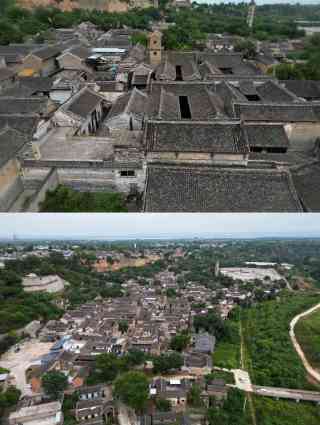
Dangjia_Village_Scenic_Area.
Accessibility
Please note that Dangjia Village may not be suitable for visitors with mobility issues due to its steep terrain and cobbled streets. Consider the shuttle service for easier access if needed.
Final Tips
- Photography: The village’s beautiful architecture and landscapes provide ample opportunities for stunning photographs, so bring your camera!
- Cultural Respect: As you explore, be respectful of the local culture and traditions. Engage with residents where appropriate, and consider learning a few basic Mandarin phrases to enhance your interactions.
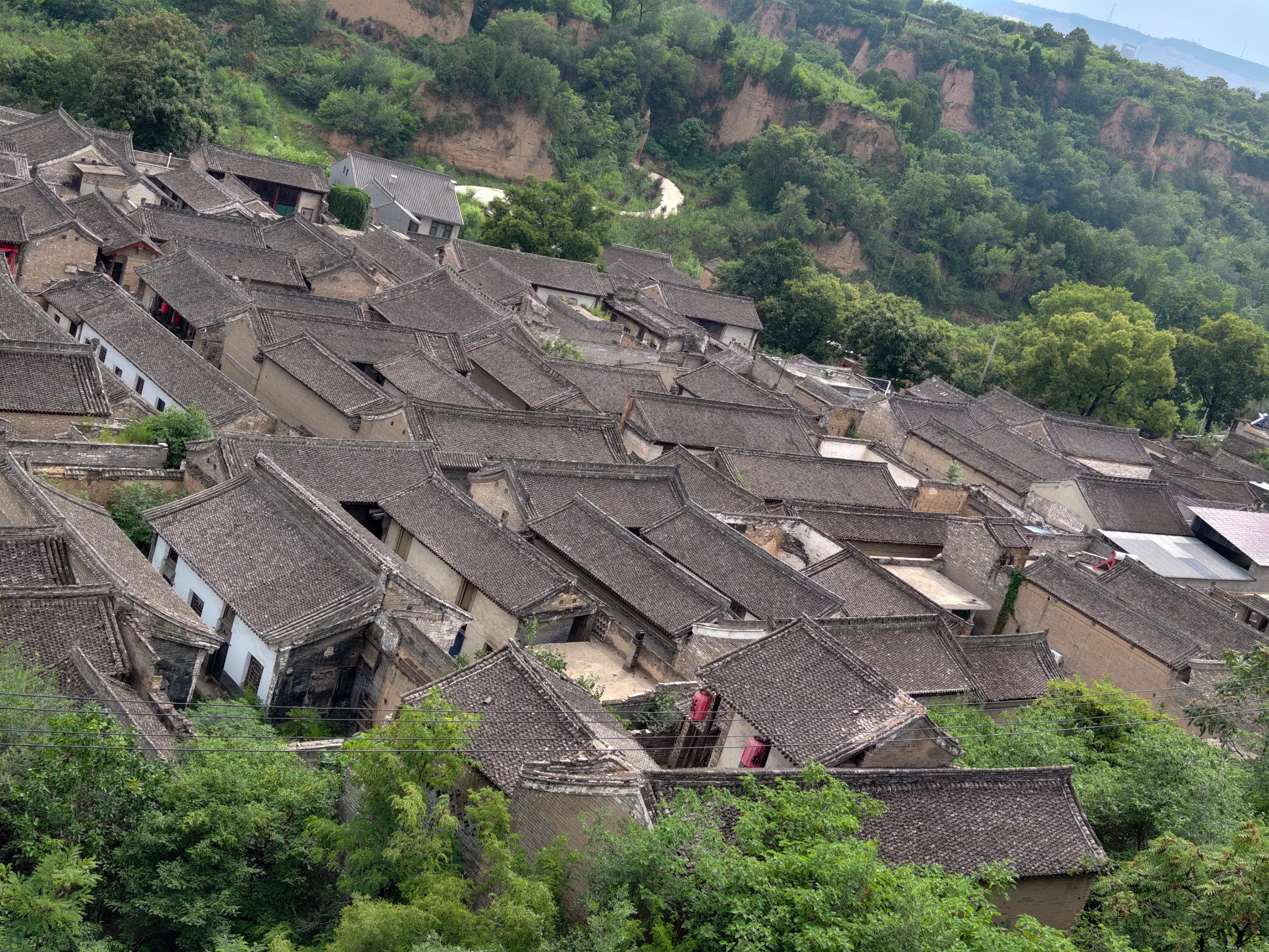
Dangjia_Village_Scenic_Area.
By planning ahead and following these guidelines, your visit to Dangjia Village will be a rewarding experience filled with cultural richness and historical exploration. Enjoy your journey through this remarkable chapter of Chinese history!
Tickets: Prices, Booking, and Tips
Visiting Dangjia Village Scenic Area is a journey into China’s rich history and culture, making it a must-see for international travelers. To enhance your experience, here’s a comprehensive guide to ticket pricing, booking options, and helpful tips for your visit.
Ticket Information
- Admission Fee: Entrance to Dangjia Village typically costs around RMB 30 (approximately $5 USD). This modest fee supports the preservation of the village and its cultural heritage.
- Discounts: Children under the age of 12 and seniors may qualify for discounted tickets. Always check for local information regarding any changes in pricing or special offers.

Dangjia_Village_Scenic_Area.
Booking Options
- Online Reservations: To save time and ensure availability, consider booking your tickets online through platforms like Trip.com or other reputable travel sites. This can also provide you with the latest information on any promotions or discounts.
- On-Site Purchase: Tickets can also be purchased directly at the entrance of the village. However, during peak tourist seasons, it’s advisable to arrive early to avoid long queues.
Tips for Your Visit
-
Best Time to Visit: The village is open year-round, but the ideal times to visit are during the spring (April to June) and autumn (September to November) when the weather is mild and the scenery is particularly beautiful.
-
Transport Options: If you’re not keen on walking, a shuttle service is available for a small fee, making it easier to navigate the hilly terrain of the village. Walking is highly recommended to fully appreciate the cobblestone paths and historic architecture.
-
Explore the Surroundings: Plan to spend a few hours exploring not just the village but also nearby attractions such as Fawang Temple and the Ruins Cultural Artifacts Exhibition Hall. Each offers a glimpse into the region’s rich history.
-
Local Cuisine: Don’t miss out on sampling local delicacies such as the village’s famous spicy peppercorns, available at several small shops throughout the village. These make for great souvenirs!
-
Accessibility: Be mindful that the village is not wheelchair-friendly due to its steep paths and cobblestone streets. If you have mobility concerns, it’s best to consult with local guides regarding accessibility options.
-
Respect Local Culture: As a historically significant site, it’s important to respect the local customs and traditions. Keep noise to a minimum and avoid littering to help preserve the village’s charm.
By planning ahead and following these tips, your visit to Dangjia Village will not only be enjoyable but also enriching, allowing you to immerse yourself in the storied past of this enchanting location.
How to Get There: A Complete Transportation Guide
Reaching the Enchanting Dangjia Village Scenic Area
Nestled in the picturesque loess valley, Dangjia Village offers travelers a rare glimpse into 14th-century life in China. With its well-preserved architecture and rich cultural heritage, this village is a must-visit for those interested in history and culture. Here’s how you can easily reach this charming destination.
Getting to Hancheng
1. By Air:
The nearest major airport to Dangjia Village is Xianyang International Airport (XIY), located approximately 130 kilometers away. This airport services both domestic and international flights. Once you land, you have several options to reach Hancheng:
- Airport Shuttle Bus: Take the shuttle bus to Xi’an, then transfer to a train or bus to Hancheng.
- Taxi or Ride-Hailing Services: A direct taxi ride from the airport to Hancheng will take about 1.5 to 2 hours, depending on traffic, and will cost around 300-400 RMB.
2. By Train:
Hancheng has its own railway station, making it accessible from major cities like Xi’an and Weinan:
- From Xi’an: Trains to Hancheng run frequently, with a travel time of approximately 2 to 3 hours. High-speed trains are available and offer a comfortable and efficient journey.
- From Weinan: The trip takes about 1 hour, with both regular and high-speed options available.
3. By Bus:
Buses are another viable option if you prefer to travel by road:
- From Xi’an: Buses depart regularly from the Xi’an East Bus Station to Hancheng, taking around 3 hours.
- From Weinan: Frequent buses connect Weinan to Hancheng, with a travel time of about 1.5 hours.
Local Transportation to Dangjia Village
Once you arrive in Hancheng, getting to Dangjia Village is straightforward:
1. Taxi:
Taxis are readily available at the train and bus stations. The ride to Dangjia Village will take around 20-30 minutes and should cost approximately 30-50 RMB.
2. Public Transportation:
For budget-conscious travelers, local buses are an option. Look for buses heading towards Dangjia Village Scenic Area; however, schedules may vary, so it’s advisable to check locally.
3. Shuttle Service:
During peak tourist seasons, a shuttle service may be available from Hancheng to Dangjia Village. Inquire at your hotel or at local tourist information centers for more details.
Exploring the Village
Upon arrival at Dangjia Village, you’ll likely want to explore on foot to truly immerse yourself in the atmosphere of this historical site. The village is pedestrian-friendly, with its cobblestone streets and stunning architecture.
- Walking: The best way to appreciate the intricate details of the village’s architecture and the scenic views is to wander through its narrow streets.
- Shuttle within the Village: If walking is challenging, there are shuttle services available within the village for a nominal fee, making it easier to explore without fatigue.
Tips for an Enjoyable Visit
- Timing: Aim to visit during weekdays if possible, to avoid large crowds and enjoy a more serene experience.
- Stay Hydrated: Be sure to carry water, especially if you plan on walking through the village.
- Photography: Don’t forget your camera! The picturesque views and historical buildings provide fantastic photo opportunities.
With this comprehensive transportation guide, you’re well-equipped to embark on your journey to the enchanting Dangjia Village. Enjoy your exploration of this cultural gem!
Local Cuisine and Accommodation Nearby
Discovering Flavors and Stays Near Dangjia Village
Nestled in the heart of Shaanxi province, Dangjia Village offers not just a glimpse into history but also a delightful culinary experience and comfortable accommodation options. As you explore this well-preserved 14th-century gem, immerse yourself in the local flavors and find a cozy place to rest after a day of exploration.
Local Cuisine
Dangjia Village is famous for its unique culinary offerings that reflect its agricultural heritage. Here are a few dishes and local specialties you should not miss:
-
Spicy Peppercorns: The village is well-known for its numbing spicy peppercorns, which are locally produced. These add a distinctive kick to many traditional dishes and are a must-try for spice lovers.
-
Noodle Dishes: Look for eateries serving handmade noodles, often paired with rich broths and fresh vegetables. The hearty, comforting flavors reflect the local palate.
-
Traditional Dumplings: Dumplings are a staple in Chinese cuisine, and in Dangjia, you can find them stuffed with various fillings, from pork to seasonal greens. These make for a satisfying snack as you wander through the village.
-
Local Snacks: Vendors often set up stalls selling local snacks, including fried pastries and sweet treats that showcase the region’s culinary creativity.
As you savor these delights, be sure to chat with the locals, who are often eager to share their recipes and food stories, enriching your culinary exploration.
Accommodation Options
After indulging in the local cuisine, you’ll want a comfortable place to unwind. Here are some recommended accommodations near Dangjia Village:
-
Hancheng Hotel: Located just a short drive from the village, this hotel offers modern amenities while providing easy access to local attractions. Enjoy a restful night in spacious rooms, some with beautiful views of the surrounding countryside.
-
Dangjia Village Homestays: For a more immersive experience, consider staying in a homestay within the village. This option allows you to engage with local families, enjoy authentic home-cooked meals, and learn about their way of life firsthand.
-
Boutique Guesthouses: A few charming guesthouses offer a blend of traditional architecture and modern comforts. These accommodations often feature beautiful courtyards and are perfect for travelers looking for a serene atmosphere.
-
Mid-Range Hotels: Several hotels in nearby Hancheng cater to various budgets and preferences. Some provide guided tours and transportation services, making your trip even more convenient.
Conclusion
Whether you’re tasting the local peppercorns or resting in a cozy guesthouse, your experience near Dangjia Village promises to be rich in flavor and culture. Enjoy the unique blend of history and hospitality that this picturesque village has to offer, and don’t forget to immerse yourself in the culinary delights that await you!
Frequently Asked Questions
Common Inquiries About Dangjia Village Scenic Area
1. What is Dangjia Village known for?
Dangjia Village, located in Hancheng, Shaanxi Province, is renowned for its well-preserved 14th-century architecture, showcasing the lifestyle and culture of ancient Chinese villagers. The village was historically home to two clans, the Dang and Jia, and offers visitors a glimpse into the past through its cobblestone streets, traditional courtyard houses, and significant cultural artifacts.
2. How do I get to Dangjia Village?
Dangjia Village is situated northeast of Hancheng. The most convenient way to reach it is by taxi or private car from Hancheng city center, which is approximately 10 kilometers away. Alternatively, shuttle services may be available for visitors preferring not to walk.
3. What are the opening hours?
The village is open 24 hours a day, allowing visitors to explore at their convenience. However, the best time to visit is during daylight hours to fully appreciate the architecture and scenery.
4. Are there any entry fees?
Yes, there is a nominal entrance fee to access Dangjia Village. This fee helps maintain the village and its facilities. Visitors are advised to check local listings or ticket counters for the most current pricing information.
5. What should I expect in terms of facilities?
Dangjia Village is equipped with basic facilities, including clean restrooms located near the pagoda. While the village maintains its historical charm, visitors will find some shops selling local products, including the famous numbing spicy peppercorns unique to the area.
6. Is the village accessible for individuals with mobility challenges?
Due to the village’s cobblestone streets and steep pathways, it may pose challenges for individuals with mobility issues. Those who find walking difficult can opt for shuttle services that operate within the area for a small fee.
7. What is the best time of year to visit?
The ideal time to visit Dangjia Village is during the spring (April to June) and autumn (September to November) months. During these seasons, the weather is mild, making it perfect for walking and exploring the historical landscape.
8. Can I find accommodations nearby?
Yes, there are several hotels and guesthouses in Hancheng, ranging from budget options to more luxurious stays. It is advisable to book in advance, especially during peak travel seasons, to ensure availability.
Final Thoughts on Your Trip
Reflecting on Your Journey to Dangjia Village
As your adventure through Dangjia Village Scenic Area comes to a close, take a moment to reflect on the rich tapestry of history and culture you’ve encountered. Nestled in the serene loess valley northeast of Hancheng, this 14th-century village serves as a living testimony to China’s storied past. Here, time feels suspended, allowing you to step back into an era where the architectural beauty of grey-brick courtyard houses and intricate carvings reign supreme.
Highlights of Your Visit
- Timeless Architecture: Wander through the cobbled streets and admire the harmonious blend of architectural styles, each telling its own story of the village’s heritage.
- Cultural Insights: Experience the essence of rural life as it once was, with opportunities to engage with local crafts and flavors, particularly the famed numbing spicy peppercorns that hail from this region.
- Scenic Views: Don’t miss the breathtaking viewpoint before entering the village—a perfect spot to capture the thatched roofs and picturesque landscapes that define Dangjia’s charm.
A Journey Worth Remembering
Your visit to Dangjia Village is more than just a stop on your itinerary; it’s a chance to connect with the past and appreciate the resilience of cultural traditions amidst the rapid modernization of China. Whether you wandered the ancient streets, marveled at the Confucian pagoda, or simply enjoyed the tranquility of this historic locale, the memories forged here will undoubtedly resonate long after your departure.
As you prepare to leave, consider how this experience has enriched your understanding of Chinese history and culture. May it inspire further explorations into the heart of China and its many hidden gems. Safe travels, and carry the spirit of Dangjia with you wherever your journey leads next!